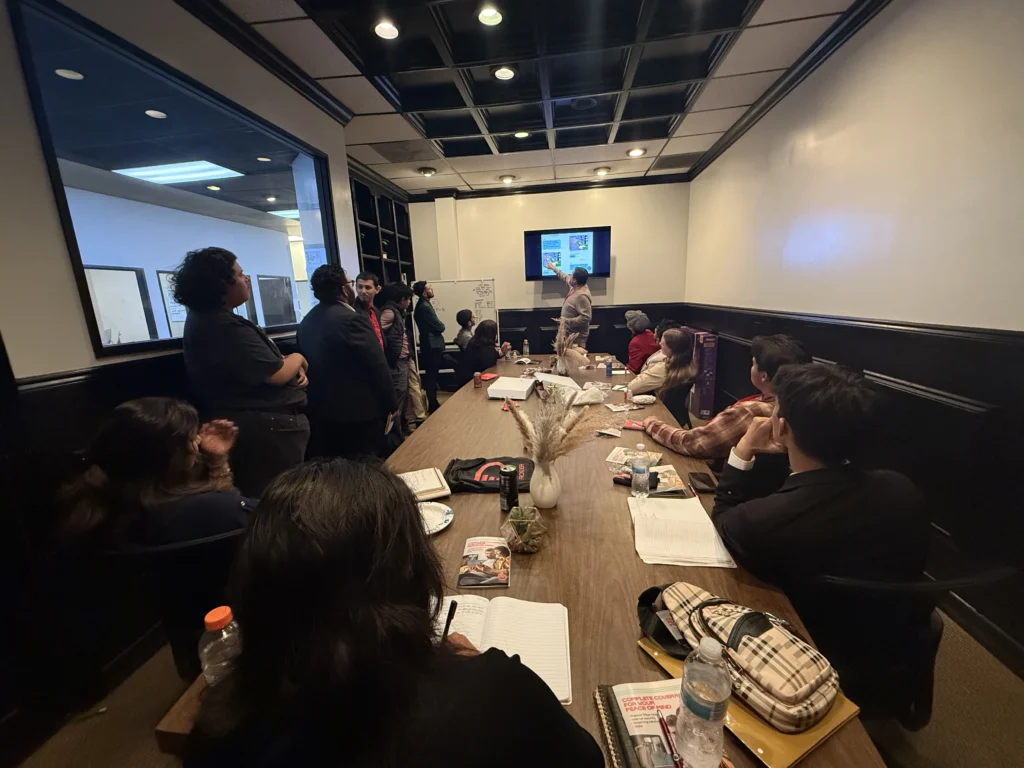For any business, making a lasting impression is essential. One of the most powerful ways to do this is through in-person product presentations.
Unlike digital demonstrations, face-to-face presentations provide an opportunity to build a real connection with your audience, showcase your product’s features in a dynamic way, and receive immediate feedback.
In this article, we’ll explore effective techniques for delivering impactful in-person product presentations, discuss the importance of on-the-ground outreach teams, and outline how a customer-first sales strategy can make all the difference.
Why In-Person Product Presentations Matter
In-person product presentations are essential because they offer a human touch that digital channels simply can’t replicate. These presentations allow for live demonstrations, real-time interactions, and the chance to build personal connections with potential customers.
Key Benefits:
- Immediate Feedback: Customers can ask questions and receive answers on the spot.
- Personal Connection: Building rapport face-to-face fosters trust and loyalty.
- Hands-On Experience: Demonstrating products in real time shows how they work and how they benefit the customer.
- Tailored Pitches: Adjust your presentation based on audience reactions to keep them engaged.
When done correctly, in-person presentations don’t just inform—they inspire action. The key lies in delivering a presentation that is both informative and engaging.
Involve Your On-the-Ground Outreach Teams
Successful presentations often involve collaboration with on-the-ground outreach teams. These teams help build local relationships, foster community involvement, and gather valuable feedback during the presentation process.
How Outreach Teams Enhance Presentations:
- Local Presence: They bring familiarity and community trust.
- Audience Engagement: Team members can assist in gathering input and answering questions.
- Post-Presentation Follow-Up: They help maintain the connection after the event.
Best Practices for Team Involvement:
- Brief your team on the presentation goals and key messages.
- Assign roles, such as tech support, audience engagement, and data collection.
- Ensure that everyone is prepared to handle FAQs and provide support where needed.
Adopting a Customer-First Sales Strategy
A customer-first sales strategy emphasizes addressing the customer’s needs rather than pushing a product. During your presentation, make it clear how your product benefits the audience personally.
Steps to Implement a Customer-First Approach:
- Active Listening: Allow the audience to voice concerns and ask questions.
- Address Needs Directly: Connect product features to specific customer challenges.
- Provide Real Examples: Share stories that illustrate how others benefited from the product.
- Show Empathy: Acknowledge challenges and offer practical solutions.
By putting the customer’s needs first, you build trust and demonstrate that your product is genuinely beneficial.
Handling Objections with Confidence
In-person product presentations often come with a range of questions and concerns. Rather than viewing these objections as obstacles, it’s crucial to see them as opportunities to build trust and showcase the value of your product. Skillfully addressing objections not only boosts your credibility but also demonstrates your commitment to customer satisfaction.
Objections are a natural part of any sales interaction. Whether customers are skeptical about the product’s effectiveness, concerned about cost, or hesitant due to past experiences, how you respond can make or break the sale. By handling objections with confidence and empathy, you can transform potential roadblocks into meaningful conversations that lead to a positive outcome.
When done effectively, addressing objections has several benefits:
- Builds Trust: Responding calmly and confidently shows professionalism and reliability.
- Demonstrates Product Knowledge: Thoughtful answers convey that you understand the product inside and out.
- Personalizes the Experience: Tailoring responses to individual concerns makes the customer feel valued.
- Strengthens Relationships: Addressing concerns directly helps build long-term connections with customers.
Key Strategies for Handling Objections
To effectively manage objections during in-person presentations, it’s essential to be prepared, stay composed, and show genuine interest in resolving the customer’s concerns. Below are some proven strategies to help you turn objections into opportunities:
1. Stay Calm and Composed
Maintaining a calm demeanor sets a positive tone for the conversation. Even if the objection seems challenging, staying composed demonstrates professionalism and confidence.
How to Stay Calm:
- Take a deep breath before responding to give yourself a moment to think.
- Use positive language and a friendly tone.
- Maintain eye contact to show attentiveness and respect.
2. Actively Listen and Acknowledge
One of the most important aspects of handling objections is showing that you truly understand the customer’s point of view. Active listening means focusing on the customer’s words without interrupting, nodding to show comprehension, and repeating their concern to ensure clarity.
Techniques for Active Listening:
- Paraphrase the objection to confirm understanding.
- Use empathetic statements like, “I see why you might feel that way.”
- Avoid interrupting, as it can make the customer feel dismissed.
3. Provide Evidence and Real-Life Examples
When customers express doubts, backing up your claims with concrete evidence can be highly persuasive. Data, testimonials, and real-life stories not only add credibility but also make your response more relatable.
Ways to Provide Evidence:
- Use statistics or case studies relevant to the product.
- Share customer testimonials that align with the objection.
- Demonstrate the product’s features directly when possible.
4. Reframe the Objection as a Benefit
Sometimes, objections stem from a lack of understanding rather than a genuine problem. By reframing the concern as a positive feature, you can shift the conversation from doubt to interest.
Techniques to Reframe:
- Highlight how the perceived drawback can actually be an advantage.
- Relate the concern to a broader context that demonstrates value.
- Emphasize long-term benefits over short-term inconveniences.
5. Ask Clarifying Questions
If an objection seems vague or overly broad, asking clarifying questions can help you better understand the root of the concern. This approach shows that you are genuinely invested in solving the issue rather than brushing it aside.
Effective Questions to Ask:
- “Can you tell me more about your experience with similar products?”
- “What specific features are you most concerned about?”
- “How do you see this product fitting into your current setup?”
6. Offer a Solution
Once you fully understand the objection, propose a practical solution. Whether it’s a demonstration, a discount, or a guarantee, offering a way forward shows your willingness to meet the customer halfway.
Examples of Solutions:
- Demo Option: “How about I show you how the product works in real time? That way, you can see the results for yourself.”
- Trial Period: “Would you feel more comfortable if you had a trial period to see how it performs?”
- Money-Back Guarantee: “We’re confident in the product, which is why we offer a satisfaction guarantee.”
Following Up: Reinforcing the Connection
A successful in-person presentation doesn’t end when the audience leaves. Follow-up interactions are vital for turning interest into commitment.
Effective Follow-Up Techniques:
- Send a Thank-You Note: Express gratitude for their time and attention.
- Provide Additional Information: Share digital brochures or case studies.
- Offer a Special Promotion: Encourage quick action with a limited-time offer.
- Collect Feedback: Ask how the presentation met their expectations and what could be improved.
Making Every Presentation Count
Mastering in-person product presentations is essential for building stronger customer relationships and achieving direct sales success. By focusing on preparation, audience engagement, and follow-up, you create meaningful connections that last beyond the initial meeting.
At Vega Innovations, we believe in the power of personal interaction to drive business growth. If your business is ready to enhance its outreach through impactful presentations, connect with our expert team today. We’ll help you craft presentations that leave a lasting impression and generate real results.


